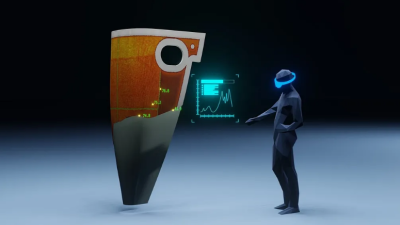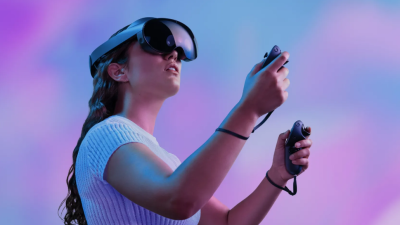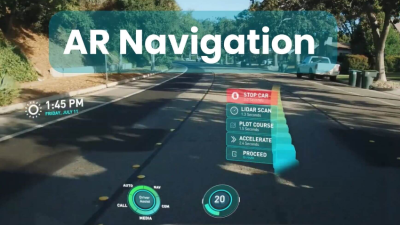Shopping isn’t what it used to be. The retail world has changed dramatically over the past decade, and technology stands at the center of this transformation. Among these innovations, augmented reality (AR) has emerged as a game-changer that’s reshaping how we browse, try, and buy products.
Remember the frustration of wondering if furniture would fit in your living room? Or the disappointment when clothes you ordered online didn’t look right upon arrival? These common shopping headaches are precisely what AR aims to solve.
AR bridges the gap between physical and digital retail by overlaying virtual elements onto our real-world environments. The results? More confident purchasing decisions, fewer returns, and shopping experiences that feel almost magical.
Changing How We Shop
The traditional retail journey has always had limitations. In physical stores, inventory is restricted by shelf space. Online, customers can’t touch or try products before buying. AR addresses both problems by creating a hybrid experience.
Shoppers now use their smartphones or tablets to visualize products in their actual environments. A sofa can be placed virtually in your living room. Makeup can be “applied” to your face without touching a sample. Clothing can be “tried on” through virtual fitting rooms.
This try-before-you-buy capability transforms browsing into an interactive adventure rather than a guess-based gamble. The technology serves both practical and emotional needs of shoppers – reducing uncertainty while increasing engagement.
AR Applications Transforming Retail Today
Leading retailers aren’t waiting for the future – they’re implementing AR solutions now. IKEA’s Place app lets shoppers see exactly how furniture pieces would look and fit in their homes before purchase, dramatically reducing return rates and increasing customer satisfaction.
Cosmetics brands like Sephora use AR to let customers virtually try numerous makeup products instantly. This level of experimentation would be impossible with physical samples, creating a more hygienic and efficient shopping experience.
Clothing retailers have perhaps the most to gain. Virtual fitting rooms allow customers to see how garments might look on their bodies without the hassle of changing rooms. Some advanced systems even account for how fabrics move and drape based on body type.
Learn more about implementing these and other AR retail strategies through our <a href=”https://armarketingtips.com”>specialized AR marketing consultancy</a> services.
Benefits Beyond the Obvious
While visualizing products is AR’s most apparent retail application, the technology offers additional benefits that aren’t immediately obvious.
In-store navigation becomes intuitive with AR wayfinding. Shoppers can follow virtual paths directly to desired products rather than wandering aisles. This efficiency improves the shopping experience while reducing staff demands for directional assistance.
Product information becomes interactive and personalized. Rather than reading generic labels, customers can point their devices at products to see information relevant to their specific needs or restrictions, from allergen warnings to sustainability credentials.
According to research from Boston Consulting Group, retailers implementing AR solutions report increased conversion rates between 10% and 200%. The technology doesn’t just impress customers – it actively influences purchasing decisions.
Implementation Challenges
Despite its promise, AR retail adoption faces hurdles that businesses must navigate thoughtfully.
Development costs remain substantial, particularly for smaller retailers. Creating high-quality 3D assets for entire product catalogs requires significant investment, though these costs continue to decrease as technology advances.
Technical barriers exist on both business and consumer sides. Not all devices support advanced AR features, and older smartphones may deliver subpar experiences that frustrate rather than delight.
Integration with existing e-commerce and inventory systems presents another challenge. AR experiences must reflect real-time product availability and specifications to maintain customer trust.
The Future Shopping Experience
The trajectory of AR in retail points toward increasingly seamless integration between physical and digital worlds.
Next-generation AR glasses will free shoppers from holding smartphones, creating truly hands-free augmented shopping experiences. Major tech companies are racing to develop comfortable, stylish eyewear that could replace the smartphone as our primary AR interface.
Personalization will reach new heights as AR systems incorporate artificial intelligence. Virtual assistants will make recommendations based not just on purchase history but on real-time reactions to products being viewed through AR.
Social shopping will evolve through shared AR experiences. Friends separated by distance will shop together in virtual spaces, seeing the same augmented products and providing real-time feedback to each other.
Getting Started with Retail AR
For retailers considering AR implementation, several approaches offer entry points based on budget and technical capabilities.
Web-based AR provides the broadest accessibility, requiring no app downloads and working on most modern smartphones. This approach offers a lower entry barrier for both retailers and customers.
Partnerships with established AR platforms can reduce development costs while providing access to proven technology. Many solutions now offer subscription models that make enterprise-grade AR tools accessible to smaller retailers.
Starting with high-value product categories makes economic sense. Furniture, cosmetics, and fashion currently show the strongest consumer demand and clearest return on investment for AR implementations.
Measuring AR Success
Effective AR implementation requires strategic measurement beyond traditional retail metrics.
Engagement time with AR features often correlates with purchase likelihood. Customers who spend time virtually placing furniture or trying on virtual clothing demonstrate heightened interest that frequently translates to sales.
Return rate reduction represents one of AR’s most quantifiable benefits. When customers can accurately visualize products before purchase, disappointment upon delivery decreases significantly.
Customer feedback specifically about AR features provides invaluable insights for refinement. The technology continues to evolve rapidly, and user experience data guides effective development priorities.
AR isn’t just changing how we shop – it’s redefining what shopping means. The technology transforms retail from a transaction into an experience, blending entertainment with practical decision support. For forward-thinking retailers, AR represents not just a competitive advantage but an entirely new way to connect with customers.





